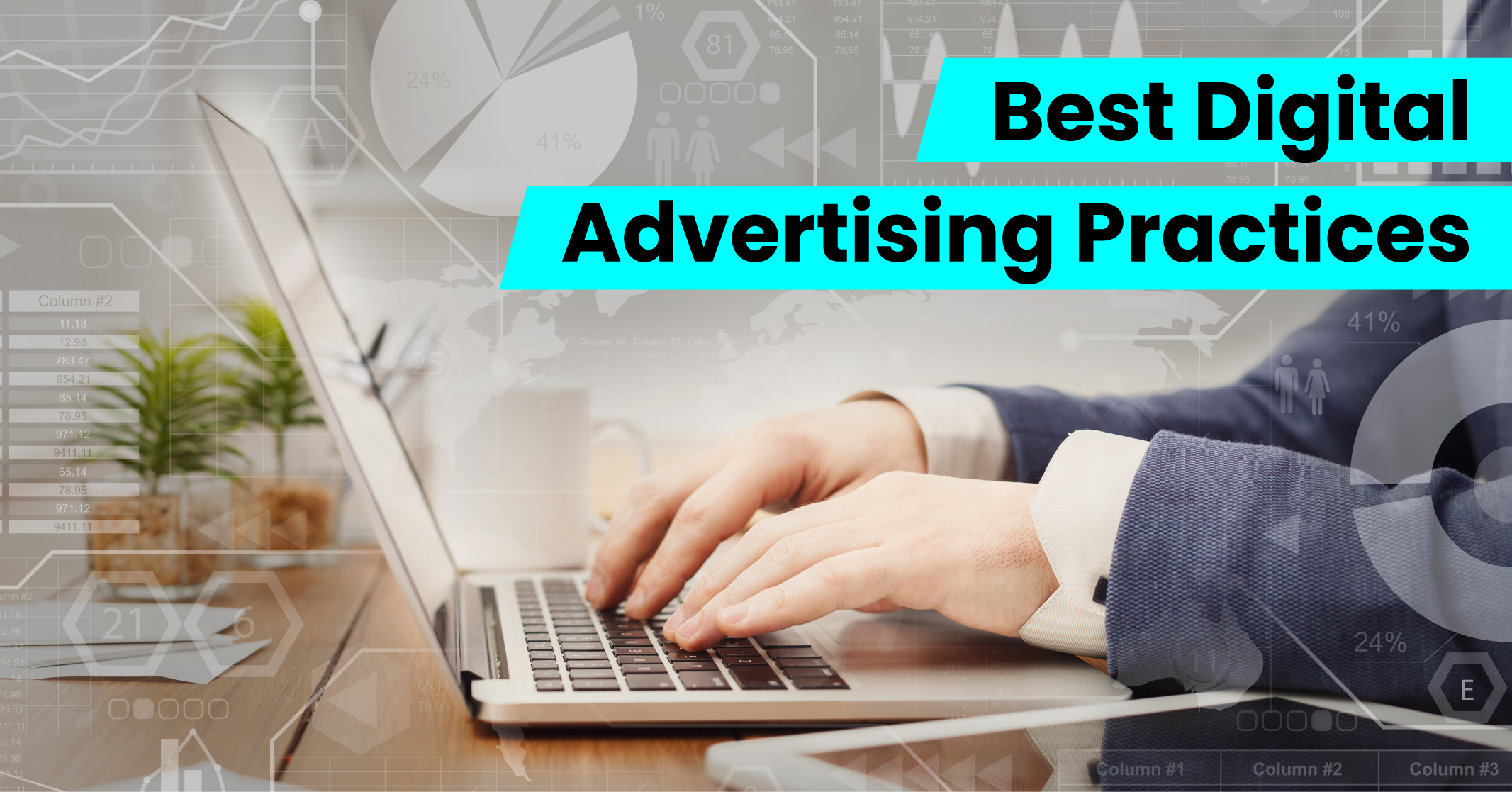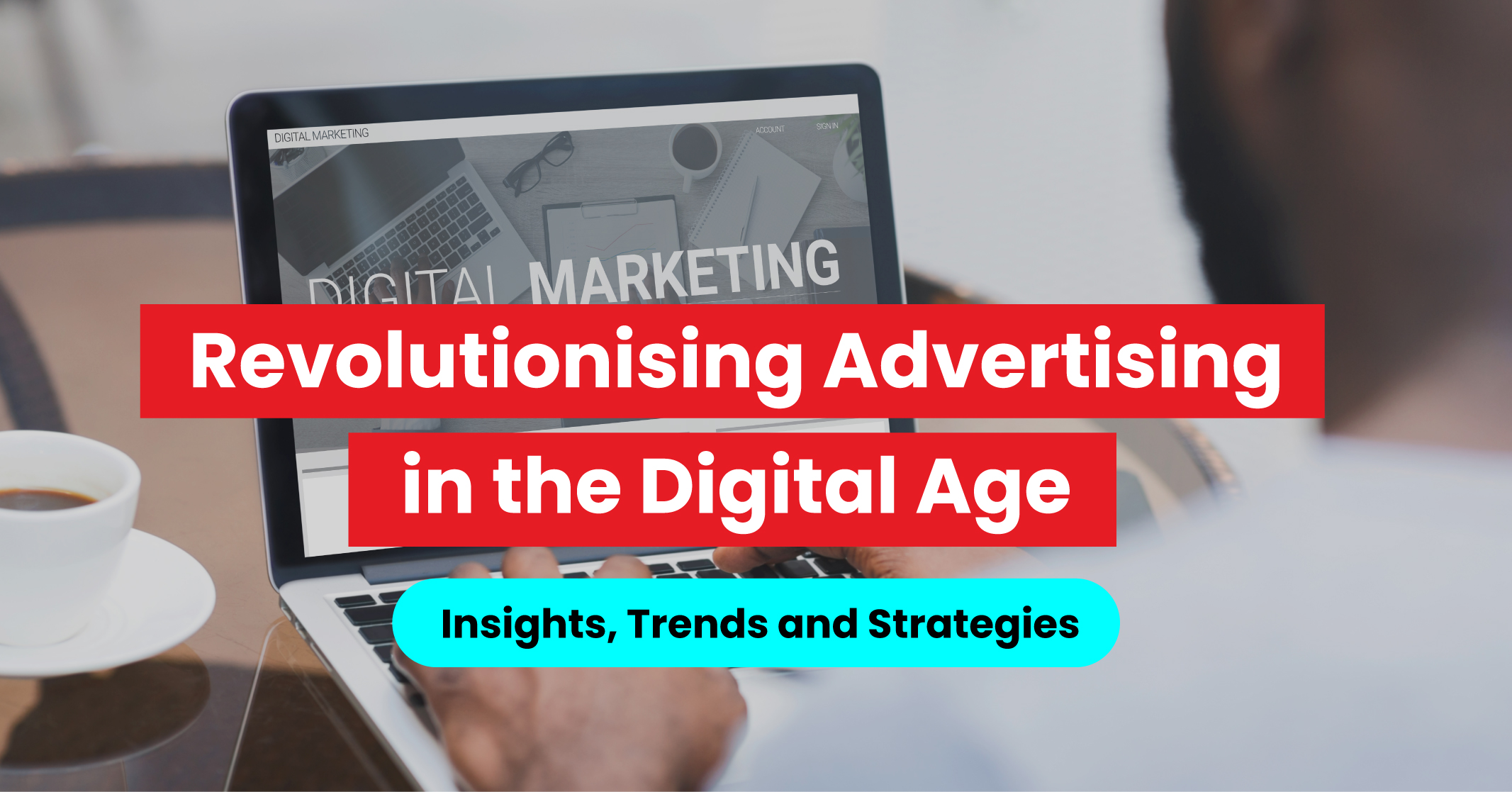Revolutionising Advertising in the Digital Age: Insights, Trends and Strategies
Digital advertising has become an essential part of businesses of all sizes as they strive to expand their brand and reach customers beyond their local area. However, for those new to online marketing, the abundance of approaches, channels, strategies and tactics can be overwhelming.
But fear not! In this guide, we will provide you with everything you need to know to get started, address your concerns and set you on the path to digital advertising success.
Click Here – Free 30-Minute Strategy Session
Be quick! FREE spots are almost gone for this Month
Free Quote
What is Digital Advertising?
Digital marketing encompasses any online activity by a business aimed at gaining followers, website visitors, emails or other key information about the target market. Digital advertising is the specific aspect of digital marketing that is focused on generating leads or sales. However, like other marketing efforts, it also aims to showcase and promote the company, brand, products or services online.
Digital advertising can be seen on a variety of channels, including:
- Social Media
- Search Engines
- Websites
- E-mail
- Apps
- Videos
- Podcasts
As a marketer, your goal is to target your audience with relevant and timely messaging that encourages them to click through to your website or marketplace page and make a purchase.
How Digital Advertising Strategies Can Help Your Business?
Digital advertising strategies have become increasingly important for small and medium-sized businesses (SMBs). This is especially true during economic downturns, as it is crucial to maintain brand awareness and reach new customers. Online marketing and advertising are also more cost-effective than traditional advertising methods, such as TV, radio and print ads.
Role of Digital Advertising
Digital advertising for SMBs allows you to target the right audience at the right time, using detailed audience-building and targeting tools provided by social media and search advertising platforms. This ensures that the right people receive the right messages at the right time. Additionally, online marketing allows SMBs to reach a larger audience than traditional methods, such as word of mouth or local newspaper ads.
Moreover, online marketing provides SMBs with the ability to track progress, measure results and improve their marketing campaigns as they progress. This makes it easier for businesses to optimise their marketing strategies for better performance.
Learn More: What is the Role of Digital Marketing?
What are the Different Types of Digital Advertising Channels for SMBs?
Digital advertising channels are the different online platforms where you can run your marketing campaigns and reach potential customers. Here are some channels that are commonly used by small and medium-sized businesses:
- Company WebsiteYour business website is a crucial platform for digital advertising. Think of it as your virtual store or office where customers can browse your products and services, learn more about your business, and make purchases. All your social media content and ads should lead back to your website, especially if that’s where you sell your products and services.What To Do?If you don’t have a website yet, you can create one using various content management systems (CMS) and platforms available. These platforms usually provide website hosting and other online services.
- Local ListingsListing your business on local directories can help improve your search engine optimization (SEO) and make it easier for potential customers to find you.What To Do?Listing Management tools like ours can help you add your business information to various directories and keep it updated across all of them.
- PPC (Pay-Per-Click) AdvertisingPPC advertising involves paying for ads on search engines, social media or websites. It’s a great way to reach audiences who are interested in your product or service.What To Do?Optimise your search ads using relevant keywords, so that your ad appears when someone searches for a related term. If someone is searching for a term that matches your product, they are likely interested in purchasing it. However, it’s important to use specific keywords and avoid bidding on irrelevant terms.
- Social Media PPC AdsWhen you run social media ad campaigns, keep in mind that your audience may not be actively looking to buy. However, you can use social media ads to target their interests and potentially bring them to your website.What To Do?Try to retarget people who have already visited your business website.
- Google Display Network: Here your ad will appear on related websites, where visitors are naturally attracted to ads that speak to their challenges, news or goals. Google Display Network ad formats include responsive ads, video ads, website banner and video ads, YouTube ads and mobile app ads.What To Do?Create effective video ads for showcasing your products and services on social media.
- Sponsorship: It is another option for small businesses looking to tap into the audiences of non-competing brands. Brands often sponsor relevant podcasts, influencers, newsletters or even blogs.What To Do?Try sponsored guest posts to promote your product more organically.
- E-mail marketing:It can be a personal type of advertising, but it’s important to follow local and international data protection regulations and send compelling subject lines, engaging content and personalised offers.What To Do?Offer loyalty deals, product updates, seasonal deals and discounts and personalised messages can all be effective.
How to Create Highly Effective Digital Advertising Plans?

If you’re looking to design a digital advertising plan for your business, there are four key steps you should follow:
- Get to know your audienceBefore you start any marketing efforts, it’s important to understand your target audience. This includes their demographics, interests and behaviours. Research tools can help you understand your potential customers. Once you have this information, create buyer personas to guide your marketing efforts.
- Set your goalsTo give your digital marketing efforts direction, you need to set clear business goals. Determine what you want to achieve and by when so you can measure your progress and adjust your strategy accordingly.
- Decide on your channel mixFocus on a few key channels that will be the most effective in reaching your audience and achieving your goals. Consider your budget and human resources when deciding which channels to prioritise.
- Measure your resultsTrack key metrics like return on ad spend (ROAS), cost per impression (CPM), click-through rate (CTR), cost per click (CPC), conversion rate and engagement rate. Use this data to optimise your campaigns and improve your ROI.
Remember, a well-planned and executed digital advertising plan can help you reach new customers, build brand awareness and increase sales.
In this guide, we’ve highlighted several tools that can assist you in launching and managing successful digital advertising campaigns.
Let’s look at the top tools:
- AdClarity: This tool enables you to monitor your competitors’ advertising efforts, including their campaign strategies, successes and failures, channel mix and ad spending.
- Audience Intelligence: By utilising conventional analytics, market and consumer research and social media data, this tool can help you comprehend your target audience’s online behaviour.
- Listing Management: With this tool, you can easily add your business information to various directories simultaneously and keep it updated as needed.
- Instant Banner Generator: Whether you require social media or display ad banners, this tool streamlines the creative process.
- Google Analytics AdCost Import: By integrating Google Analytics AdCost Import, you can evaluate your campaign performance and calculate the critical Return on Advertising Spend (ROAS).
Key Difference Between Digital Advertising and Digital Marketing
Digital advertising and digital marketing are often used interchangeably, but they are two distinct practices within the broader umbrella of digital marketing.
Digital advertising refers specifically to the practice of using digital channels to deliver promotional advertisements to target audiences.
This can include a range of tactics:
- Display Ads
- Search Engine Marketing
- Social Media Advertising
- Video Advertising
The goal of digital advertising is to increase brand awareness and drive traffic to a website or landing page.
On the other hand, digital marketing encompasses a broader range of activities beyond just advertising. Digital marketing is the practice of promoting products or services using digital channels, which can include:
- Content Marketing
- Search Engine Optimization
- E-mail Marketing
- Social Media Marketing
The goal of digital marketing is to build brand awareness, engage with potential customers and drive sales.
While both digital advertising and digital marketing involve the use of digital channels to reach target audiences, they have different goals and strategies.
Digital advertising is more focused on paid advertising, while digital marketing includes a wider range of tactics and is more focused on building relationships with potential customers through content and engagement.
Best Digital Advertising Practices

Digital advertising is an essential part of marketing strategies. Here are some best practices that can help you make the most of your digital advertising efforts:
- Understanding who your target audience is, what they want, and where they are online is key to creating effective ads that resonate with them. Use data and analytics to create detailed buyer personas that can help you tailor your ads to specific audiences.
- There are many ad formats available, including display ads, video ads, social media ads and more. Choose the format that best fits your goals, audience and budget.
- Your ad content should be visually appealing and contain a clear message that resonates with your target audience. Use attention-grabbing headlines, eye-catching images and concise copy that communicates your value proposition.
- Your ad should lead to a relevant landing page, be easy to navigate, and encourage users to act. Optimize your landing pages for conversions by using clear call-to-action, persuasive copy and mobile-friendly design.
- Use data and analytics to track your campaign performance and make data-driven decisions about where to allocate your ad budget. Continuously monitor and optimize your campaigns to improve performance and maximize ROI.
By following the digital advertising best practices, you can create effective digital advertising campaigns that drive engagement, conversions and revenue for your business.
Learn More: The 5 Most Popular Digital Marketing Strategies for 2023
Looking for some digital advertising tips?

If you are working on a digital advertising campaign, there are a few things you must keep in mind:
- Know your audience: Before launching your campaign, take time to understand your target audience. Who are they, what do they like, what problems do they have and what solutions can you offer them? This information will help you create ads that resonate with your audience.
- Set clear goals: It’s important to have specific, measurable goals for your advertising campaigns. Are you looking to increase sales, generate leads or drive website traffic? Knowing your goals will help you determine the best approach for your ads.
- Choose the right platform: There are many digital advertising platforms to choose from, such as Google Ads, Facebook Ads, LinkedIn Ads, and more. Consider which platform is most likely to reach your target audience and achieve your goals.
- Craft compelling ad copy: Your ad copy should be clear, concise and attention-grabbing. Focus on the benefits of your product or service and use language that speaks to your audience.
- Use eye-catching visuals: In addition to your ad copy, your visuals should be visually appealing and attention-grabbing. Consider using high-quality images or videos to showcase your product or service.
- Test and optimize: Digital advertising allow for real-time testing and optimization. Continuously monitor your campaigns and adjust as needed to improve performance.
- Don’t forget about landing pages: Your ads should lead to a relevant and well-designed landing page that encourages users to act. Make sure your landing page matches the messaging of your ads and provides a clear call to action.
By following these digital advertising tips, you’ll be on your way to running successful campaigns that drive results for your business.
Conclusion
To sum it up, digital advertising has become a vital aspect of modern marketing. Its capacity to target specific audiences, monitor performance and optimize campaigns in real-time has revolutionized the way businesses reach and interact with their customers.
By adhering to best practices and applying effective tips, businesses can create profitable digital advertising campaigns that yield impressive ROI and bolster their overall growth.
As technology evolves and consumer behavior changes, it’s crucial for businesses to keep pace with the latest trends and continuously refine their digital advertising strategies to maintain their competitiveness in the market.







LEAVE A REPLY